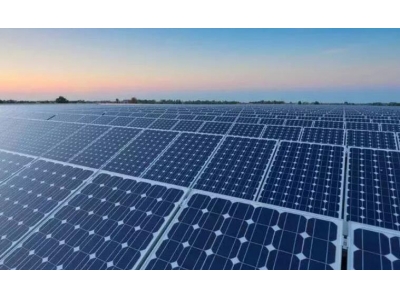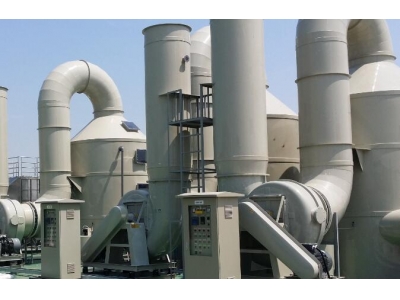一、中国最大的光伏发电基地?
目前中国最大的光伏发电基地,面积609平方公里,接近一个新加坡的面积大小 。这就是目前中国最大的光伏发电基地:青海塔拉滩光伏电站。
2012年,我国首个千万千瓦级太阳能发电基地在塔拉滩开始修建,从最初的77.9平方公里,建设到现在,总面积已经达到了609.6平方公里。
正因为如此,青海塔拉滩光伏发电站已经成为了中国最大的光伏发电基地。
二、中国可再生能源发电的装机容量提高?
11月28日电 今年以来,中国可再生能源装机规模稳步扩大,结出累累硕果。国家能源局近日发布的数据显示:截至今年10月底,中国可再生能源发电累计装机容量超10亿千瓦,达到10.02亿千瓦,相当于40多个三峡电站的装机容量,比2015年底实现翻番,占全国发电总装机容量的比重达到43.5%,比2015年底提高10.2个百分点。
其中,水电、风电、太阳能发电和生物质发电装机容量分别达到3.85亿千瓦、2.99亿千瓦、2.82亿千瓦和3534万千瓦,均稳居世界第一。
三、中国再生能源排名?
可再生能源有太阳能、生物能、风能、水能、海洋能、地热能、氢能、核能等。
1、太阳能:直接来自于太阳辐射。主要内是提供热量和电能。
2、生物能:由绿色植物容通过光合作用,将太阳能转化为化学能,储存在体内,可沿食物链单向流动,最终转化为热能散失掉。通过燃烧和厌氧发酵获得沼气来取得能量。
3、风能:由太阳辐射提供能量,因冷热不均产生气压差异,导致空气水平运动——风的形成。主要是通过风力发电机来获得能量。
4、水能:由太阳辐射提供能量,产生水循环,来自海洋的暖湿空气,受热上升,太阳能转化为势能,当在高山上形成降水后,水往低处流,势能转化为动能,就是水能。主要是通过水力发电机来获得能量。
5、海洋能:包括潮汐、波浪、洋流等海水运动蕴藏的能量,也是取之不尽用之不竭的。潮汐能主要来自于月球、太阳等天体的引力,波浪、洋流的能量主要是受风的影响。主要是通过潮汐的动能来发电。
6、地热能:来自于地球内部放射性元素的衰变。可以用于地热发电和供暖。
7、氢能:通过燃烧或者是燃料电池来获得能量。
8、核能:通过核能发电站来取得能量。
四、中国第几再生能源?
可再生能源大国是指中国。“富煤、缺油、少气”是中学地理课本上对中国能源条件的经典描述,煤炭在支撑我国经济快速发展的同时,也带来了沉重的环境负担。
近年来,一场能源领域的大变革在华夏大地悄然开启,中国作为“可再生能源第一大国”的绿色新名片正越擦越亮。我国于2015年可再生能源首次超过煤炭,成为全球最大新增电能来源。
五、可再生能源发电技术?
可再生能源包括的种类很多,发电技术包括光伏发电,垃圾焚烧,风力发电,沼气发电等。目前在我国已得到大力推广。不过,可再生能源发电技术存在能量转化率低,难以替代火力发电技术的问题,还在大力研究,期待技术上的突破。
六、中国金昌太阳能发电基地探秘:可再生能源的未来之路
地理位置与环境条件
中国金昌太阳能发电基地位于甘肃省金昌市,地处河西走廊中部,属于典型的干旱半干旱气候区域。该地区日照充足,平均日照时数较长,适宜太阳能资源的开发利用。
规模与技术
金昌太阳能发电基地占地面积广阔,拥有先进的光伏发电技术和设备。目前,基地已建成大规模的光伏发电项目,并且在不断扩大和升级。同时,基地还在不断引进先进的太阳能发电技术和设备,努力提高发电效率和环保水平。
发展现状与前景
金昌太阳能发电基地是中国在可再生能源领域的重要窗口和示范基地之一。随着政府对可再生能源的重视和扶持力度的增加,金昌太阳能发电基地必将迎来更加广阔的发展前景。未来,基地预计还将逐步建设储能设施,提高太阳能发电的可持续利用能力,为当地乃至整个国家的清洁能源供应贡献力量。
感谢您阅读本文,希望通过本文的介绍,您对中国金昌太阳能发电基地有了更清晰的认识。作为中国可再生能源发展的重要组成部分,金昌太阳能发电基地的发展不仅将为当地经济社会发展带来积极影响,也将助推中国清洁能源事业的蓬勃发展。
七、中国可再生能源基地英文版
中国可再生能源基地英文版
Introduction
China has been making significant strides in renewable energy production and has emerged as a global leader in this sector. With increasing concerns about climate change and the need to reduce dependence on fossil fuels, the development of renewable energy sources has become a top priority for the country. One of the key initiatives in this regard is the establishment of renewable energy bases or "基地" in Chinese, aimed at harnessing the power of nature while promoting sustainable and green practices.
The Concept of Renewable Energy Bases
A renewable energy base is a designated area where various renewable energy projects are concentrated. These bases are strategically chosen based on factors such as availability of resources, geographical conditions, and technological feasibility. The concept of renewable energy bases not only aims to increase the overall renewable energy capacity but also serves as a platform for innovation, research, and development in the sector.
Advantages of Renewable Energy Bases
Renewable energy bases offer a multitude of benefits to China's energy landscape:
- Increased Energy Production: By concentrating renewable energy projects in a specific location, the overall energy production capacity can be significantly increased. This helps address the growing energy demands of the country while reducing reliance on non-renewable sources.
- Efficient Resource Utilization: Renewable energy bases allow for improved utilization of available resources. For instance, wind farms can be established in areas with consistent wind patterns while solar farms can be set up in regions with ample sunlight. This results in optimal utilization of renewable energy sources and reduced wastage.
- Technological Advancement: The concentration of renewable energy projects in a base fosters collaboration, knowledge sharing, and technological advancements. Researchers, engineers, and experts work together to explore new possibilities and develop innovative solutions to enhance the efficiency and effectiveness of renewable energy technologies.
- Economic Growth: Renewable energy bases create job opportunities, stimulate economic growth, and attract investments. These bases not only generate employment in the construction and maintenance of energy projects but also boost the local economy through ancillary industries such as manufacturing of equipment, components, and infrastructure.
- Environment Conservation: Perhaps the most significant advantage of renewable energy bases is their positive impact on the environment. By shifting towards renewable sources, China can reduce its carbon footprint, mitigate air pollution, and contribute to a sustainable future for generations to come.
Examples of Renewable Energy Bases in China
China has established several remarkable renewable energy bases across the country:
Qinghai Hainan Tibetan Autonomous Prefecture Renewable Energy Base
Located in the pristine Qinghai province, this base is known for its vast wind and solar power installations. The region benefits from strong winds and ample sunshine, making it an ideal location for wind and solar farms. The base has considerably boosted the renewable energy capacity of the province and serves as a model for the integration of clean energy sources into the grid.
Zhejiang Ningbo Renewable Energy Base
Ningbo, a coastal city in the Zhejiang province, is home to one of China's most prominent renewable energy bases. This base primarily focuses on offshore wind power generation due to its advantageous location along the coastline. The base not only contributes significantly to the overall renewable energy targets of the country but also showcases the potential of offshore wind farms in meeting the energy demands of densely populated coastal regions.
Shanxi Datong Renewable Energy Base
Shanxi Datong Renewable Energy Base, situated in the coal-rich Shanxi province, represents a transition from coal-dependence to renewable energy sources. This base aims to transform the energy landscape of the province by harnessing wind and solar power. By utilizing the existing energy infrastructure and repurposing coal mines for clean energy projects, this base is a testament to China's commitment to a greener, more sustainable future.
Conclusion
China's renewable energy bases play a crucial role in not only increasing the country's renewable energy capacity but also promoting sustainability, innovation, and economic growth. Through the consolidation of renewable energy projects in specific areas, China can maximize the utilization of resources, foster technological advancements, and reduce environmental impact. These bases serve as exemplary models for other countries striving to achieve a clean energy transition, and they position China as a global leader in renewable energy production and sustainability.
八、中国再生能源有哪些?
中国的再生能源有:太阳能、水能、风能、生物质能、波浪能、潮汐能、海洋温差能、地热能等。它们在自然界可以循环再生。是取之不尽,用之不竭的能源,不需要人力参与便会自动再生,是相对于会穷尽的非再生能源的一种能源。
像生物能和煤炭、石油、天然气等化石能源,主要通过植物的光合作用吸收太阳能储存起来。
其它像风力,水力,海洋潮流等等,也都是由于太阳光加热地球上的空气和水的结果。
九、可再生能源发电怎样创业?
建立发电项目后进行运营上午卖电,收取合理利润
十、可再生能源发电的前景?
可再生能源发电目前正迅速发展,未来前景非常乐观。在全球范围内,越来越多的国家和地区投入资金和时间来研发和部署可再生能源,因为可再生能源具有许多不同的优点,如能够减少二氧化碳排放、降低能源成本、创造就业机会等等。
其中,太阳能和风能是最为常见的可再生能源类型。太阳能和风能技术不断改进,成本不断降低,同时还能够提供稳定的电力供应。此外,水力发电、地热发电、生物质能等也是重要的可再生能源类型。
随着政策、技术和市场等因素的进一步成熟和提高,可再生能源发电的前景会越来越好。





